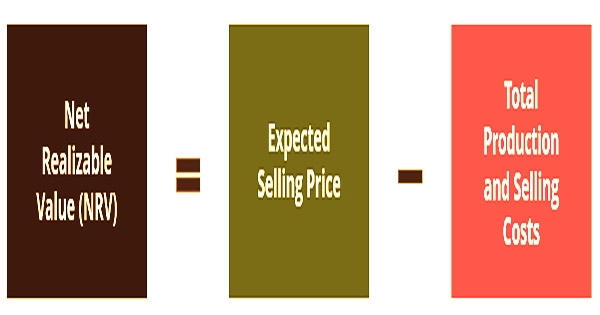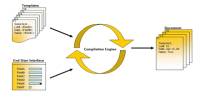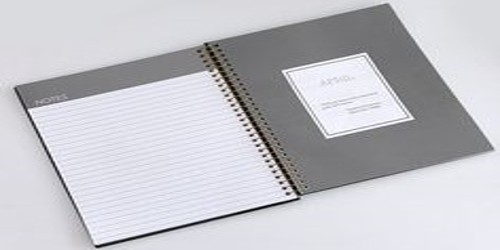The predicted selling price of goods minus the cost of their sale or disposal is known as net realizable value or NRV. It’s typically used to figure out how much ending inventory or accounts receivable are worth. In reality, the NRV is a valuation approach used in inventory accounting that takes into consideration the total amount of money an asset may earn if it were sold, less a fair estimate of the charges, fees, and taxes involved with that sale or disposal.
NRV is a part of the Generally Accepted Accounting Principles (GAAP) and International Financial Reporting Standards (IFRS) that apply to inventory valuation so that the value of inventory goods is neither overstated or understated. It’s a conservative approach employed by accountants to guarantee that an asset’s value isn’t exaggerated. It’s a popular way for evaluating accounts receivable and inventories, as well as cost accounting.
The NRV calculation is crucial because it prevents the assets’ valuation from being overstated. Any reasonably predictable costs of completing, transporting, and disposing of inventory are deducted from the expected selling price. NRV is a common approach for determining the value of an asset in inventory accounting.
Accounts receivable and inventory are two of the largest assets that a firm might have on its balance sheet. The selling price of inventory products less the selling costs equals the net realizable value (completion and disposal). As a result, it is projected that the sales price will be less than the selling costs (e.g. repair and disposal costs).
The NRV follows a more conservative accounting methodology. When professional judgment is required for the transaction evaluation, the conservatism approach advises accountants to employ valuation methods that yield a smaller profit and do not overestimate the worth of the assets. When applying the Lower of Cost or Market Rule, NRV is the price cap that prohibits an asset’s worth from being overstated or understated.
In the lower cost or market method of accounting reporting, net realizable value is an essential measure. When it comes to accounting methods, many company transactions allow for some discretion or judgment. The company’s inventory must be reported on the balance sheet at a lower value than either the historical cost or the market value under the market method reporting technique.
If the inventory’s market value is uncertain, the net realizable value can be used to estimate the market value. The conservatism principle dictates that accountants take the more conservative approach to all transactions. This means the accountant should employ a style of accounting that creates less profit and does not inflate the worth of assets.
Any business that has an inventory of any form must value that inventory. The method for valuing inventory is dictated by generally accepted accounting principles, usually known as GAAP. Due to the negative effects of such things as damage, spoilage, obsolescence, and diminished demand from customers, there is a continual need to review the value of inventory to see if its stated cost should be reduced.
The following steps should be taken to calculate NRV:
- Determine the expected selling price of an asset
- Determine all the costs associated with the eventual sale of the asset
- Calculate the difference between an asset’s projected selling price and the costs of selling it
The formula for determining net realizable value (NRV) is:

Accounts receivables, on the other hand, are subject to the net realizable value. Inventory values should be recorded conservatively since an exaggerated inventory could result in a company reporting much more assets than are actually present. The complete receivable total less an allowance for dubious accounts, which is the dollar amount of invoices that the company expects to be bad debt, equals the NRV for accounts receivable.
The Financial Accounting Standards Board establishes GAAP, or generally accepted accounting principles, for financial reporting and recording. Inventory must be valued at the lowest of cost or market value. The principle of conservatism obliged accountants to value inventory using the market price if the market price fell below the historical cost.
The aggregate amount of the ending balances in the trade accounts receivable account and the offsetting allowance for doubtful accounts can also be referred to as net realizable value. When a business buys inventory, it may have to pay extra to keep or prepare the items for sale. The carrying cost of inventory refers to the expenditures associated with holding inventory.
The lower of cost or market (LCM) method determines the value of inventory based on the lesser of the total cost of acquisition or the current market replacement cost. As stated in the definition, the cost is the overall cost of purchasing an item, whereas the market is the cost of replacement. When two items are manufactured jointly in a joint costing system until they reach a split-off point, NRV is also employed to account for expenses.
After the split-off point, each product is manufactured independently, and NRV is used to apportion past joint expenses to each of the products. The NRV is subtracted from the regular profit expected from the sale of the inventory item to arrive at the market floor. So, if an item’s market price falls between these two amounts, it’s considered a fair price.
Accounting conservatism is a notion that requires companies to construct their financial statements with prudence and a high level of verification. Before a corporation can make a legal claim to any profit, these bookkeeping requirements must be followed. If the market price is higher than the ceiling, the NRV should be utilized for the LCM comparison. Because the market value of an inventory is not always available, the NRV is occasionally used to replace it.
Information Sources:
















